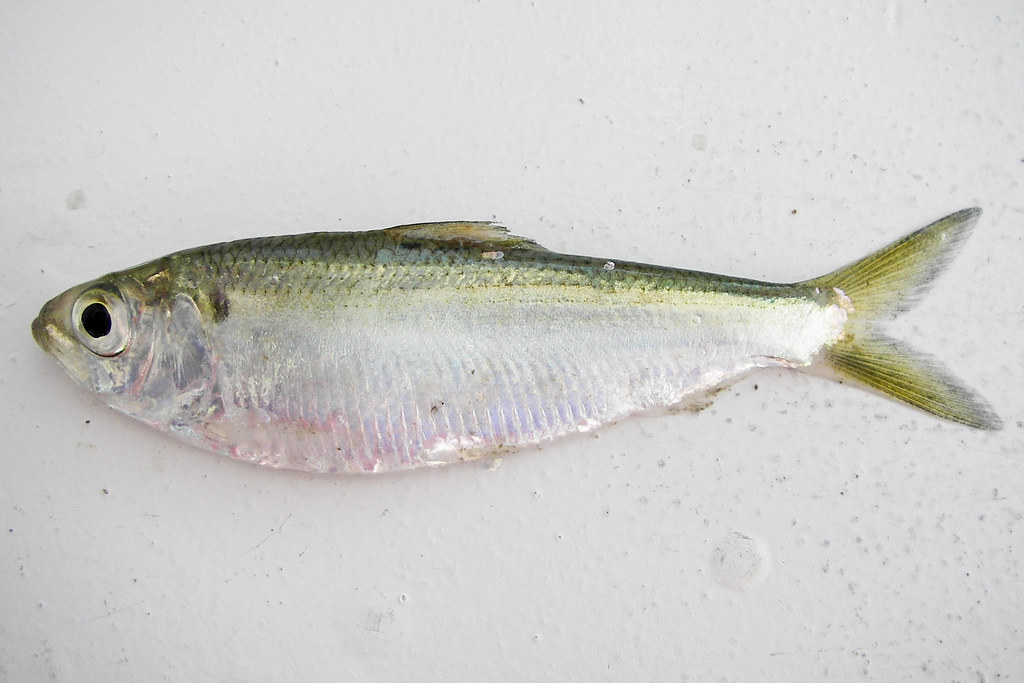Alewife
Alosa pseudoharengus
Also known as the big-eye or branch herring, the alewife is a thin, silver fish with a single dark shoulder spot located behind its head.
This section shows one large critter image at a time. Use the thumbnails that follow to select a specific image to display here.

This gallery contains a grid of small thumbnails. Selecting a thumbnail will change the main image in the preceding section.
Appearance
The alewife is a thin, silver fish with grayish-green back, smooth scales and large eyes. A single dark shoulder spot located behind the head appears on fish greater than 3.9 inches long. Adults grow to 15 inches and weigh less than one pound. Females are bigger than males.
Feeding
Schools feed in mid-water or near the surface on zooplankton, shrimp, small crustaceans, small fish, fish eggs.
Predators
A “forage fish,” the alewife has a number of predators, including lake trout, eels, bass, walleye, whitefish and salmon, as well as fish-eating birds like the osprey and double-crested cormorant.
Reproduction and life cycle
An anadromous fish, the alewife must migrate from the ocean into freshwater rivers, streams and ponds to spawn each spring. Females reach spawning grounds first. Older fish are the first to spawn; adults move downstream after spawning takes place. Eggs are adhesive when first laid, but soon lose stickiness and settle on substrate. Eggs hatch in three to six days. Young grow rapidly through spring and summer. While some will spend first winter in the Bay, most gradually migrate downstream before entering the ocean in the fall. Less than one percent will survive spawning season. The oldest fish recorded at spawning sites were 9 to 10 years old.
Did you know?
- Alewives are packaged fresh, smoked, salted or pickled for human consumption. Alewives are also used for pet food, lobster and snow crab bait and processing into fishmeal and fish oil.
- The "river herring" fishery (which includes the alewife and the blueback herring) has been one of the most valuable in the Bay, with annual catches once exceeding 8 million pounds in Maryland and 30 million pounds in Virginia. The degradation and destruction of spawning habitat and the restriction of spawning migration (or fish passage) by dams have contributed to the decline of these stocks.
Sources and additional information
- Life in the Chesapeake Bay by Alice Jane Lippson and Robert L. Lippson
- Fishes of Chesapeake Bay by Edward O. Murdy, Ray S. Birdsong and John A. Musick
- Alosa pseudoharengus – University of Michigan Museum of Zoology
- Alewife and Blueback Herring – Maryland Department of Natural Resources
- Alewife (Alosa pseudoharengus) – Virginia Department of Game and Inland Fisheries
